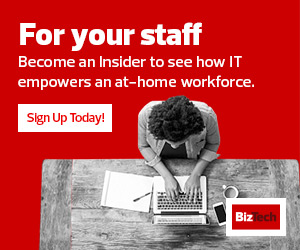Many businesses were in a scramble for new tools when widespread remote work began. Whether it was adopting new collaboration technologies or establishing networks that could power remote workforces, the amount and capacity of IT solutions were forced to grow to meet the needs of the moment.
Once employees were fully enabled, IT teams had to turn to another challenge: securing those complex environments. Employees were now depending on their own home networking — and sometimes even their own devices — to do their work, and those connections and computers needed to be defended.
As remote work continues, it seems that this will be the new reality, not just a passing trend, said Vasu Jakkal, Microsoft’s corporate vice president for security, compliance and identity.
“We believe that modern security should empower you to go further, faster,” Jakkal said at Microsoft Ignite. “It should be at the intersection of great human expertise and great technology. It should be cloud-native and AI-based so that it works for you everywhere, at scale. It should be extensible to a broad ecosystem of third-party tools. It should be based on zero-trust principles.”
That modern security structure is where security, compliance and identity meet, Jakkal said.
WATCH: Learn the secret behind building strong security without compromising customer experience.
Integration Is Key for Modern Security
One of the bigger challenges with security is making sure it’s working across multiple platforms and tools. Embedding it into products is key, Jakkal said: “We believe that security should be end to end, including cybersecurity, identity and compliance. These components should be totally integrated, and built right into the products and platforms for comprehensive protection and seamless user experience.”
Having this security can give employees the reassurance they need to flourish.
“We know from our own business that being safe and feeling safe are what empower people to do more, to create more and to have trust in the very technology that connects us all,” Jakkal said. “That is the true purpose of security.”
Keeping up with the latest security threats as the nature of work changes has also been challenging. Having too many separate security solutions only makes that challenge harder, said Andrew Conway, general manager for security marketing at Microsoft.
“Security teams are struggling to keep up, often trying to manage multiple, poorly integrated solutions in the face of threats that are growing in sophistication,” Conway said. “Data is being collected and analyzed in silos, while point solutions and teams are challenged to detect and root out threats in the face of overwhelming alert fatigue.”
By building security right into programs, IT teams don’t have to spend as much time connecting the dots and can focus on greater digital transformation efforts instead.
Making Compliance and Identity Security Priorities
In many industries, businesses have more than just their own security concerns to consider; they also have regulations.
“The area of compliance is increasing in importance and challenges, with millions of people working remotely and an explosion of data, as well as data regulations,” said Jakkal. “In fact, this is an area that most security offerings ignore completely.”
To help combat this, Microsoft has announced new features that allow users to put policies directly into Microsoft 365, prompting users to make sure that certain kinds of information are protected.
At the center of remote work security is identity. Businesses need to know that only their employees can gain access to their systems. To do that, they must be able to accurately identify legitimate users from bad actors.
“Identity is the backbone of a strong security posture, as well as productivity,” said Jakkal.
To protect identity, it’s important to protect personal information. Jakkal announced new investments from Microsoft in a decentralized model of identity access, so users can control their own digital identity and determine who can see it. This will help cut through the confusion of various policies that are often complicated for users to understand.
“We believe in progress over perfection,” said Jakkal. “The key is that every step you take in this process makes your organization safer, makes you safer, and protects data and privacy in a modern, connected way.”
“2020 is marking a moment in time that none of us could have imagined,” Jakkal added. “A moment that has amplified the need for a resilient response to unexpected change. A moment in which digital safety is paramount to productivity.”











